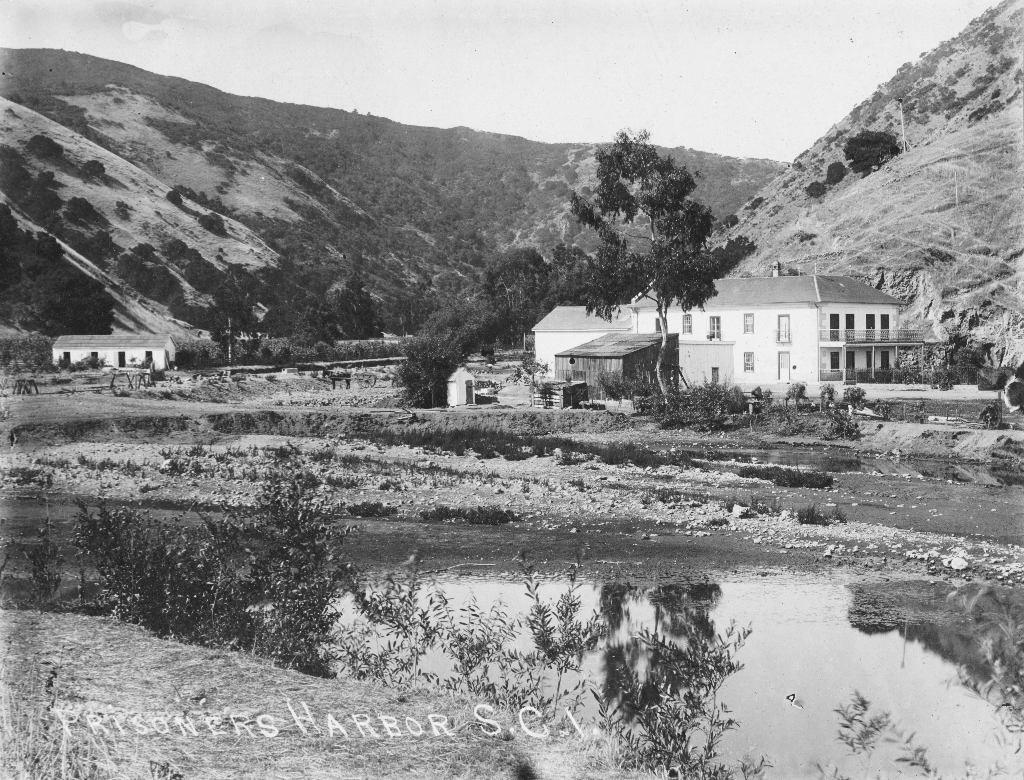
Although the ranch house was torn down in 1960 after it was damaged by a flood, historic plantings such as agave and pink ladies mark its former location. The stone and adobe six-room house at La Playa, constructed some time between 1857 and 1873, was enlarged and remodeled by Caire's craftsmen into an elegant, ten-room residence. A second-story balcony, with island-made ornamental wrought iron rail faced the channel, and small decorative balconies in the same wrought iron pattern adorned the side windows and French doors framed in brick on the upper story. A garden stretched in front of the house surrounded by more wrought iron work. A separate kitchen building stood near the house for many years. The Caires either replaced or remodeled it into a more substantial gable-roofed building. A stone well with a windmill pumped water to a tank on the hill above the house. The stone well remains, although the water tank and windmill have disappeared.
Research shows that the only official post office on the northern Channel Islands may have been located in the ranch house. The Post Office Department commissioned Arthur J. Caire as postmaster of La Playa on March 28, 1895. It remained in service for eight years, closing on June 30, 1903.
A barn, which stood across the creek at the bottom of the hill on the east side of the valley, was used to store hay and alfalfa brought from the Campo Avuelo, Las Peras, Segundo and Tercero fields to the east. Photographs showed it with large rolling doors, a dormer with an opening, and a low vent cupola on the gable roof. The barns and other outbuildings burned or were razed.
More Ranch Information
Prisoner's Harbor was the gateway to the Main Ranch in the island's central valley and the grazing and agricultural lands and out-ranches on the western portion of the island. Its facilities were of the utmost importance to the island's owners as the shipping facility, entry point for visitors, and warehouse location. By the 1860s a ranch had been established at Prisoners Harbor. Today, the buildings, structures, and plantings that remain are part of Santa Cruz Island Ranching District, which is eligible for listing in the National Register of Historic Places.
Is there something we missed for this itinerary?
Itineraries across USA


















































